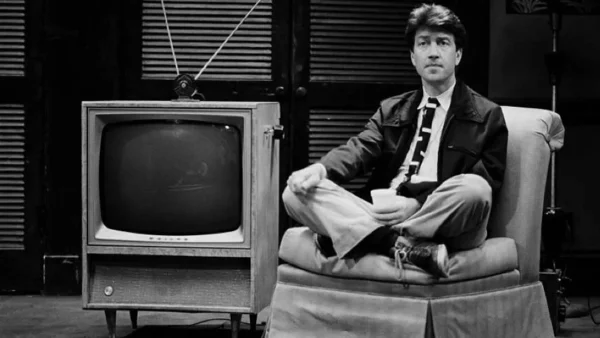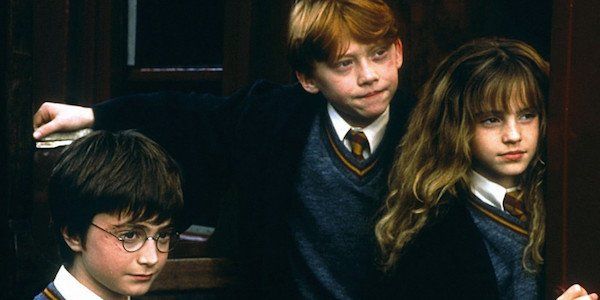The Jeffery Dahmer story: Did Netflix mess up?
A show about kids banding together to defeat monsters from an alternate dimension; a show about romance and drama in the 1800s; a show about a deadly game of kids’ challenges; a show about zombies: all the rage on Netflix. Streamed for hundreds of millions of hours.
But not even a popular show about Lucifer himself could be as controversial as the new incredibly popular Jefferey Dahmer show entitled “Dahmer–Monster: The Jeffery Dahmer Story.”
Recently the miniseries has dropped on Netflix after about a month of anticipation. The show is meant to be a new look on Jeffery Dahmer. The summary on Netflix is, “The story of one of the most notorious serial killers in the United States, largely told from the points of view of his victims.”
Ryan Murphy, an extremely famous director and producer who has made many different TVshows and movies, such as Glee, American Horror Story, Pose, Scream Queens, Hollywood, The Politician, Ratched, The Prom, The Watcher, and many more, created the show. All of those shows have been a hit, and he has a very interesting creative direction that makes people want more.
This means Murphy has a lot of power, and he can most definitely create any show he feels like whenever he wants with a reasonable budget. Sometimes that can be a good thing, because a lot of his shows are very inspirational, beautiful and important. But it can also lead to things the people may not be very happy with.
Obviously, he’s not the only one to blame. Hundreds of people were in the making of the new Dahmer series, but it’s important to highlight what can happen when you give a person a lot of power, mainly someone who has a lot of privilege in society (white, male, etc).
Shows about serial killers and true crime cases have spiked since the 2000s. With at least ten projects about Ted Bundy, ten about Jeffery Dahmer, and other killersf like the Nightstalker and the Zodiac Killer. The question is, why?
Why do people feel the need to tell these stories over and over again? Why when most of the public believes that these people don’t deserve so much attention and coverage?
First, what is going on with the Jeffery Dahmer show? What are the problems with it? What are the reasons people believe Netflix made a grave mistake?
The show follows Dahmer, played by Evan Peters, a well-known actor who many find highly attractive. Many characters and roles Peters has taken on have been majority psychotic murderers, yet viewers still found him attractive, with his character that was a school shooter and rapist being a popular Halloween costume. There’s a good chance Murphy knew this.
But at least those characters were fictional. Now we have people romanticizing Jeffery Dahmer, a real serial killer on social media. It was odd that Murphy decided to put in a scene of Dahmer working out and being shirtless when it added nothing to the plot as if he knew he could get people to watch the show by advertising an attractive actor.
But that’s problematic because the point of the show was supposed to be about the victims, not that Dahmer was attractive. In fact, it’s objectively disrespectful to the victim’s families to portray him that way, and for watchers to react that way.
Speaking of the victim’s families, a not-very fun fact is they had no idea about this show. Netflix nor any of the creators of the show said a peep to the families or anyone actually involved in the events. They hired actors to portray these real people without telling them. They made a show to profit off their trauma for no reason.
Family members of the victims have spoken out about the show.
Rita Isbell, who is the sister of one of Dahmer’s victims Eroll Lindsay, said in an Insider interview, “I was never contacted about the show. I feel like Netflix should’ve asked if we mind or how we felt about making it. They didn’t ask me anything. They just did it” “It felt like reliving it all over again. It brought back all the emotions I was feeling back then. But I’m not money hungry, and that’s what this show is about, Netflix trying to get paid,”
Isbell’s cousin Eric stated in an interview, “I’m not telling anyone what to watch, I know true crime media is huge [right now], but if you’re actually curious about the victims, my family (the Isbell’s) are pissed about this show. It’s retraumatizing over and over again, and for what? How many movies/shows/documentaries do we need?” He continued in another tweet, affirming that “no, they don’t notify families when they do this. It’s all public record, so they don’t have to notify (or pay!) anyone. So when they say they’re doing this ‘with respect to the families’ or ‘honoring the dignity of the families, no one contacts them. My cousins wake up every few months at this point with a bunch of calls and messages and they know there’s another Dahmer show. It’s cruel.”
Clearly, people involved with the actual events weren’t notified or checked at all, most likely because Netflix knows they aren’t legally required to. That doesn’t mean it’s morally correct to not let anyone know.
Dayanara Guzman, leader of the True Crime Club at the iSchool, says, “There is too much coverage about it along with making too many documentaries without talking to the victims’ families asking for consent instead of continuing to bring up their trauma.”
The show also claims to focus on the racial aspect of the story and how the police were hardly doing anything about Dahmer because it took place in a predominantly black and brown area, yet all the writers are white (except for Janet Mock, but she only worked on one episode), and few people of color worked on the set.
There were two black women who worked on the set, and many of the white workers kept confusing them with each other. Kim Alsup was one of the black women and has spoken out about how traumatic her time on the show was. She says it was “exhausting” and “one of the worst shows I’ve ever worked on” in the Los Angeles Times series. She even claims to have experienced a form of PTSD from seeing the trailer and will not be watching the show. And in a tweet she said; Working on this took everything I had and I was treated horribly.
This illustrates how Netflix’s description of their show being about racism could’ve been an attempt at hiding the fact that they simply wanted money off an attractive actor and an intriguing story.
But how do you cover these stories? Should you even cover these stories? How do you remember them?
Dr.Nathan Snyder, who is an English professor at the iSchool and even teaches a course entitled Serial, says, “I think people that could’ve been involved and prevented some of those things like police and agencies like that. Like I think those kinds of professions that should remember these cases and teach these cases. Like there are all these signs that they didn’t follow. Like I feel like if anyone should talk about these cases it should be those people. Not just viewers at home.”
Ellery Rojas, an attendee of Gramercy Arts High School, a freshman of 2026 says, “It should be talked about since it’s something that happens it just shouldn’t be talked about in a way that glamorizes it like many people have been doing with the Jeffery Dahmer case.”
This shows a good point that there may have been more coverage of these cases on the entertainment side rather than the justice side, which is actually what it’s related to. Most projects on these things have romanticized and glamorized the way we look at serial killers, which is awful for us and for the victims, and badly impressionable on teenagers.
But if making a show about something like this for any reason, what should you make sure to do?
Dr. Snyder says, “I think you would have to be careful about the time period, right? Like if there are still people alive who are impacted by that offense. Like Jack the Ripper, yeah sure right. A million years ago, right? I’m not worried about those descendants like getting you know, prank calls.”
Guzman says, “I personally believe that a serial killer case should only be talked about once in the sense of making a documentary to inform the people, however not to dramatize the crime that was committed and disrespect the family of the victims.”
It’s true that these stories aren’t distant fairytales. Real people experienced them, and those real people are living today. Netflix shouldn’t be profiting off their trauma.
Why has there been a spike in media coverage of true crime cases? Younger generations are more exposed to and interested in these cases, but why?
Well, first of all, there’s simply more exposure. Rojas says, “This generation is very desensitized to things like this partly due to unrestricted internet access. In my case, it was just something I stumbled upon one day and just happened to enjoy learning about it. Now that I think about it better I think that there’s just something deeply fascinatingly morbid about serial killers that makes people want to learn more.”
But also, I think it’s important to note that coverage of true crime increased in 2000, and most notorious serial killings and famous true crime cases declined by 2000. Serial killers like Ted Bundy, the Green River Killer, John Wayne Gacy, Jeffery Dahmer, the Zodiac Killer, and cases involving famous horrifying serial killers, were mainly throughout the 70s-90s. Discover’s article calls it “The three-decade surge.” Discover also brings in statistics saying that 189 people died at the hands of a serial killer in 1987, while 30 did in 2015.
According to Discover, here is a better understanding of the spike:

So due to younger generations not experiencing and living through serial killings as much, it makes sense that they see it more as a thrill than a reality, which makes it easier for them to take an interest.
Netflix could have very well known this and is using teenagers as definite watchers of their shows, benefitting off young vulnerability and access to media.
It’s also important to recognize that the audience that consumes the most true crime is white women. Particularly conventionally attractive white women. The New Yorker writes, “There’s something about the missing young, beautiful white woman that has a lot of symbolic weight in America. It’s an aberration, and it becomes a container for things like the loss of innocence or the death of purity.” And this idea of a tragically beautiful white woman has lots of history as the New Yorker writes about how it stemmed from colonialism and conflict with native american people, and how in old movies like “The Birth of a Nation” black men are depicted as aggressive and violent towards white women.
What does this have to do with the Dahmer show? Well, though many serial killers have attacked white women, Dahmer had attacked a predominantly black neighborhood and harmed many black men. For some people, it’s easier to enjoy true crime because of their privilege, and it was easier to enjoy the Dahmer show because of their privilege.
This miniseries has become a very popular show, with 200 million hours streamed. I think most of us can agree we are glad there won’t be a season two, and hopefully we can learn from this experience and relieve the families of the victims finally. We can stop squeezing out money from things like this.
Lately the entertainment industry has gone through unusual measures to gain viewers attention. Using tools like thrill, nostalgia, and morbid events to guarantee a successful box office. But how far will the industry go? When should it be stopped? We may need more boundaries than we realize.







